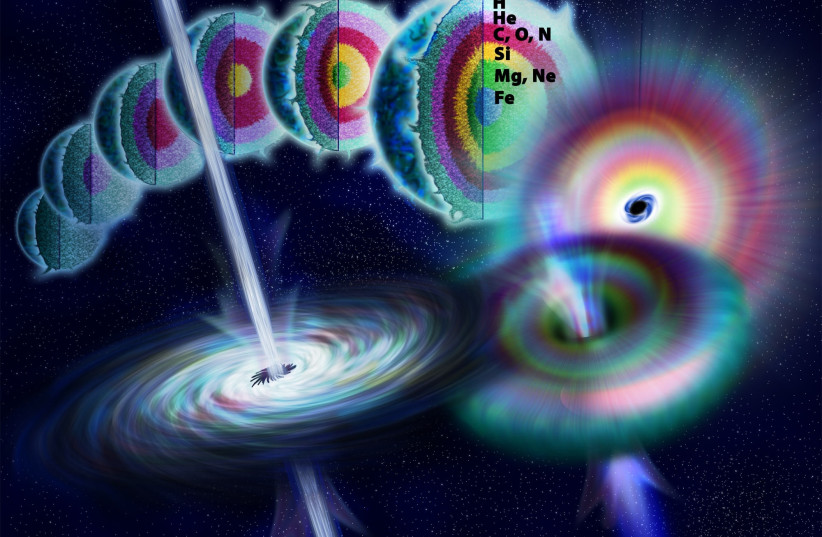Oscillating signals identified within two gamma-ray bursts may have formed during the birth of a massive neutron star, creating a potential opportunity to study the properties of similar occurrences, as per a new study.
Researchers were able to detect the bursts using several gamma-ray observatories, including the Fermi Gamma-ray Burst Monitor, the Burst Alert Telescope at the Neil Gehrels Swift Observatory and the Compton Gamma Ray Observatory.
Collisions between neutron stars, which are the dense cores of massive dying stars, can occasionally form temporary massive neutron stars before collapsing in on themselves as a black hole.
According to the peer-reviewed study, which was published in the journal Nature Communications on Monday, simulations showed that these neutron stars could create oscillations in the gamma-ray bursts emitted during neutron collisions.
The researchers involved in the study, including Cecilia Chirenti, looked at over 700 past observations of gamma rays to find signals indicating this phenomenon.
They identified two possible short-burst signals with an oscillatory phase and named the signals GRB 910711 and GRB 931101B. Some of the frequencies of the oscillations match predictions for double neutron star collisions.

“The frequencies of the QPOs [quasiperiodic oscillations] in our two featured bursts are broadly consistent with the expectations from numerical relativity simulations of double neutron star mergers.”
Researchers
"The frequencies of the QPOs [quasiperiodic oscillations] in our two featured bursts are broadly consistent with the expectations from numerical relativity simulations of double neutron star mergers," said the researchers.
Difference between short gamma-ray bursts and soft gamma-ray repeater giant flares
The researchers noted that there is tentative evidence for massive oscillation in giant flares and that it has been suggested that many short gamma-ray bursts are giant flares from soft gamma-ray repeaters rather than neutron star mergers.
The researchers thus set out to determine how to differentiate between the two distinct phenomena.
"The most definitive distinction would come from an identification of the host galaxy because SGR [soft gamma-ray repeater] giant flares do not reach the isotropic equivalent energy or luminosity of double neutron star mergers," the researchers said, adding, "However, BATSE [Burst and Transient Source Experiment] localizations are only to several square degrees and thus host identification is impossible."
The potential impact of the findings
According to the study, the detection of these phenomena could help researchers study merging neutron stars without the need for gravitational wave detection.
